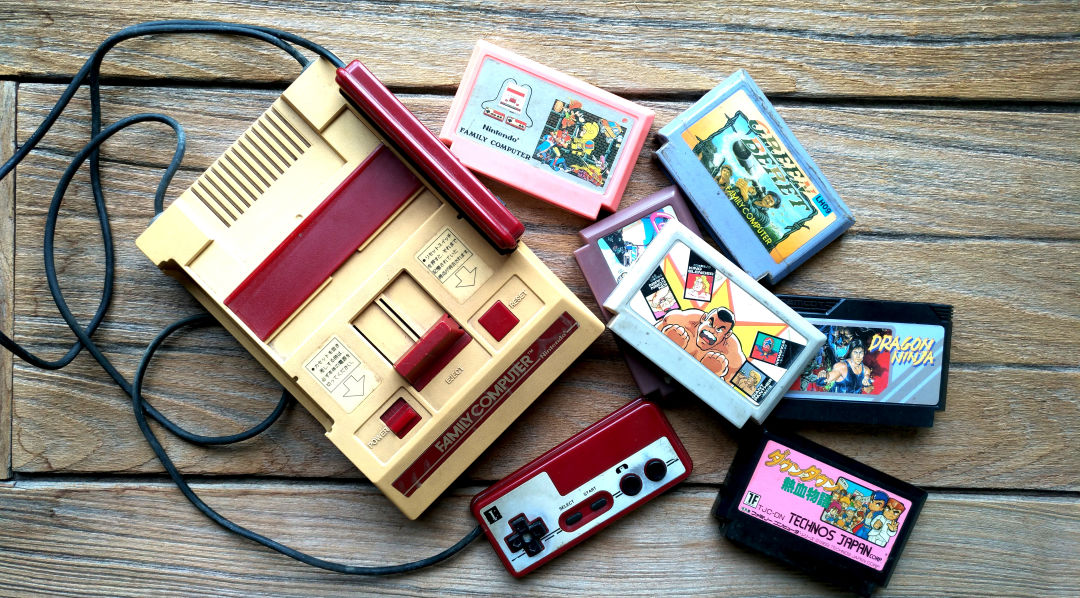The Portland Retro Gaming Expo—And Its Tetris Competition—Returns

Image: sickmoose/Shutterstock
For the world of modern video games, 2020 ushered in an unprecedented era of paradoxes. People stuck at home meant more gamers gaming than ever, but COVID delays ground new releases to a halt. Industry giants Sony and Microsoft saw record sales with the release of their flashy ninth-generation consoles, but supply shortages made them impossible to find for most consumers. New and returning gamers were entering the market in droves … at a time when its future felt anything but certain.
For retro gamers, it was a similar story. We dragged out our childhood Nintendo 64s and Segas to pass the time at home, while the Ms. Pacmans and Medieval Madnesses lining the walls of Portland’s beloved (b)arcades collected dust. It was the in-person element of classic games—going against friends for high scores, beers in hand, against a cacophony of 8-bit beeps and shouts of victory or defeat—that kept so many of us playing into the 21st century. Would it ever come back?
To find your answer, look no further than the Portland Retro Gaming Expo. After a two-year hiatus, the event will make its return from October 14–16 at the Oregon Convention Center, where thousands will flood the halls to cosplay, shop collections of old-school consoles and cartridges, attend panels, and get their hands on classic games in a massive free-to-play arcade.
PRGE, which has become one of the largest events of its kind, comes from humble beginnings. It started in the ’90s with the “Northwest Classic Games Enthusiasts,” a small group of like-minded, Seattle-based collectors who would gather once a year to sell, trade, and show off retro game relics. Over time, they started adding to the show—a few arcade games to play here, a guest speaker there. Since relocating to Portland in 2006, it’s only continued to grow.
“The show just kept getting bigger and bigger,” says PRGE Vice President Toby Wickwire. “It’s gone from this thing in a church basement to 20,000 people at the Convention Center in the last 15 years.”
This year’s expo will feature a slew of new vendors and booths. Chief among them? The last Blockbuster on earth—which, in case you haven’t heard, is still thriving in Bend—is setting up a replica of the iconic store on the convention floor, complete with shelves stocked with ’80s and ’90s VHS tapes (not available to rent, sadly) and plenty of merch for sale. Store manager and star of Netflix’s The Last Blockbuster Sandi Harding will also be giving a panel on keeping the traditional video rental experience alive in 2022.
“We haven’t done anything like this yet,” says Harding. “It’s exciting to know there’s still interest in us that will help keep the store going.”
In addition to generating video store nostalgia, the booth will host the Blockbuster World Video Game Championship 3, a revival of Sega and Nintendo tournaments that took place in Blockbuster stores throughout the country in the ’90s. It’s free to enter, and first place scores a $1,000 exhibitor hall shopping spree. To win, you’ll need to come out on top of a first round of Saturn Bomberman and follow it up with a high score on Downfall OG Plus. These easy-to-learn, family-friendly retro games were selected by event organizer Gerald Levinzon for a reason.
“We want this tournament to be as inclusive as possible,” says Levinzon. “I want families to want to play, and feel like they may even have a chance to win.”
However, not every PRGE tournament is inclusive to players of any skill level. Just down the hall at the Classic Tetris World Championship, a longtime mainstay of the expo, there is no stiffer competition on the planet.
“It’s the Super Bowl of Tetris,” says CTWC commentator Chris Tang.
In recent years, the world of competitive Tetris has gone through a series of big changes. Front and center is the untimely passing of Tetris champion Jonas Neubauer in early 2021: from the inception of the event in 2010 to 2017, Neubauer won seven out of eight championships, and beyond his nigh unbeatable prowess behind an NES controller, he was revered as a pillar in the community.
“It was a shock,” says Vince Clemente, tournament organizer and producer of Ecstasy of Order. “He set a precedent of a good, humble champion, willing take photos, talk to everyone, give his time… He was just a great ambassador for the game. It’s not the same without him.”
Beyond the loss of a beloved figurehead, the competitive scene has been shaken up—if not downright revolutionized—by a new wave of Tetris players who are fundamentally changing the way the game is played, and dominating the leaderboards as a result. Rather than simply holding down “left” or “right” on the D-Pad to move falling geometric shapes, these players have discovered new ways of handling the controller entirely, including vibrating a finger above the buttons (known as “hypertapping”), or rolling all five fingers across the bottom of the controller into their pointer above (called “rolling”). These new strategies have pushed the blistering speeds and high scores of competitive Tetris into once-unfathomable territory.
The kicker? Most of the members of this new wave are young enough to be the veteran players’ kids.
It started with Joseph Saelee, an early hypertapper and then-high schooler who took the world championship crown in 2018 and 2019. The field only got fiercer—and younger—when COVID hit and the championship was moved online, with 13-year-old Michael Artiaga placing first in 2020 and defending his title the following year.
For some CTWC competitors, 2022 will be their first time competing in-person—at least at the scale of PRGE, where the Championship is a spectacle of cheering fans, live commentators, and a huge gameplay display in the heart of the convention.
“This year’s going to be crazy,” says Clemente. “The pressure is on for you to perform in a place that’s not your living room, or bedroom, or wherever you play. You don’t get the chair you usually sit in … you get the hard plastic convention chair.”
This new generation of players discovering, and ultimately dominating, a game as iconically retro as Tetris might seem unlikely. It could be chalked up to a lot of factors: the advent of YouTube and Twitch, extra free time during the pandemic, viral Tetris memes. But none of it would have happened without the first few young players who burst onto the scene and encouraged others to follow suit.
“Joseph Saelee inspired a new generation of players,” says Tang, “and I think that stems from Jonas Neubauer inspiring a lot of other players, too…. It’s not something that anybody said was cool. It’s that it was cool, because people were doing it, and they were serious about it, and they loved it.”
For Gerald Levinzon, it’s this timeless coolness of a game like Tetris that gets to the heart of what makes retro games so great overall.
“Video games are some of the highest form of art,” says Levinzon. “If you have a quality game—even if it’s on the Game Boy in four different shades of green, but the gameplay is there…. Why wouldn’t that appeal to kids?”




